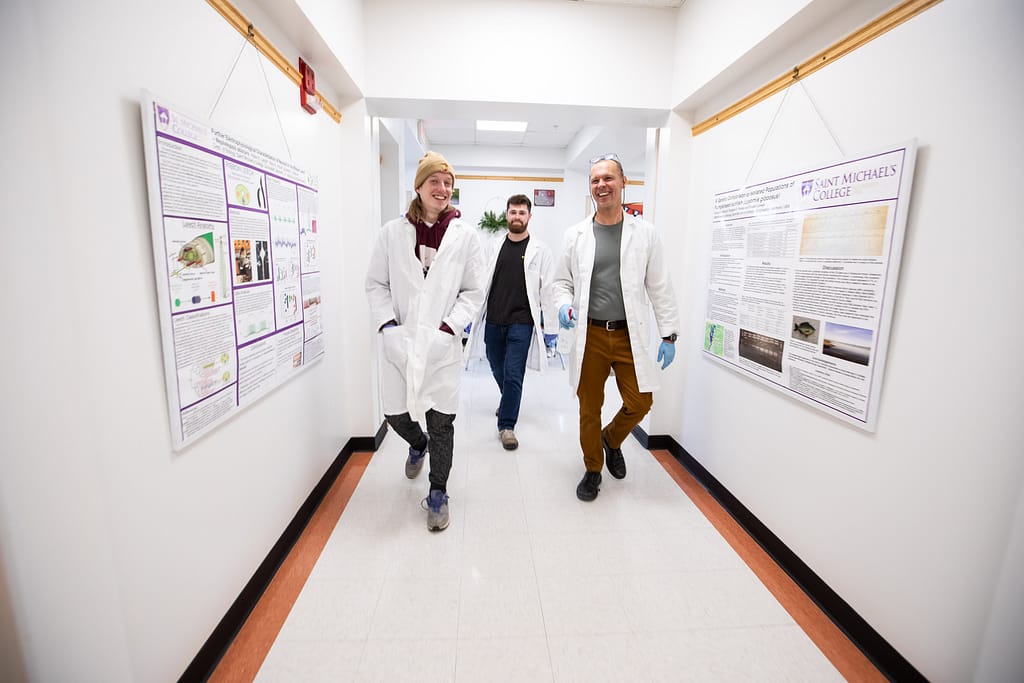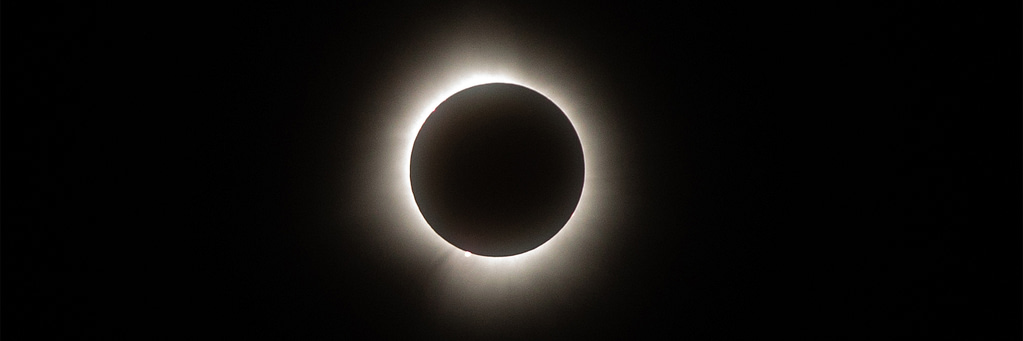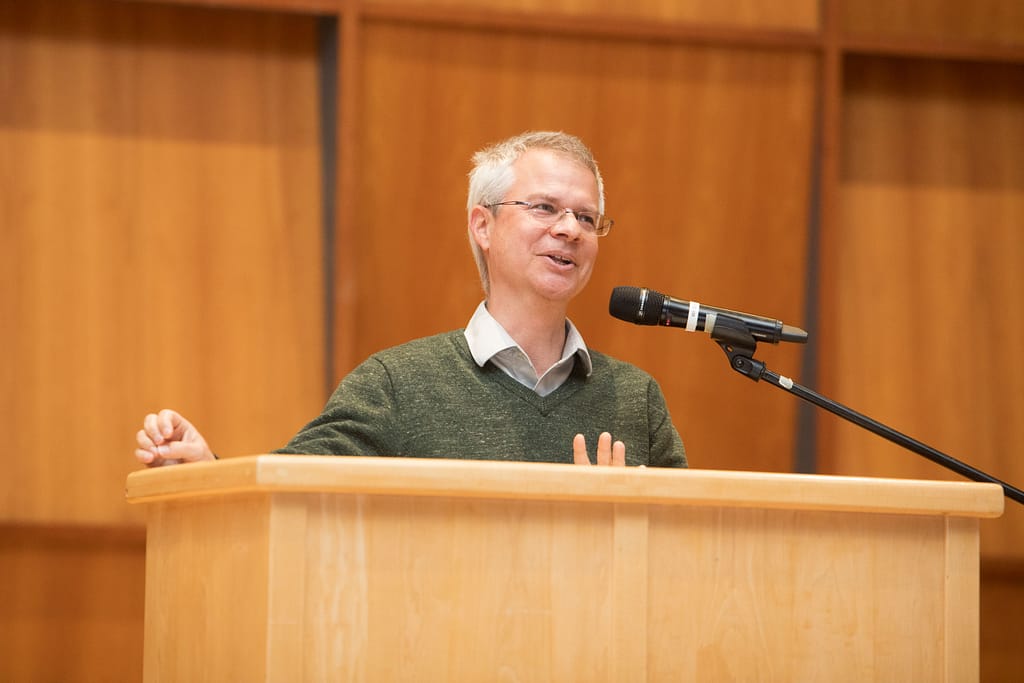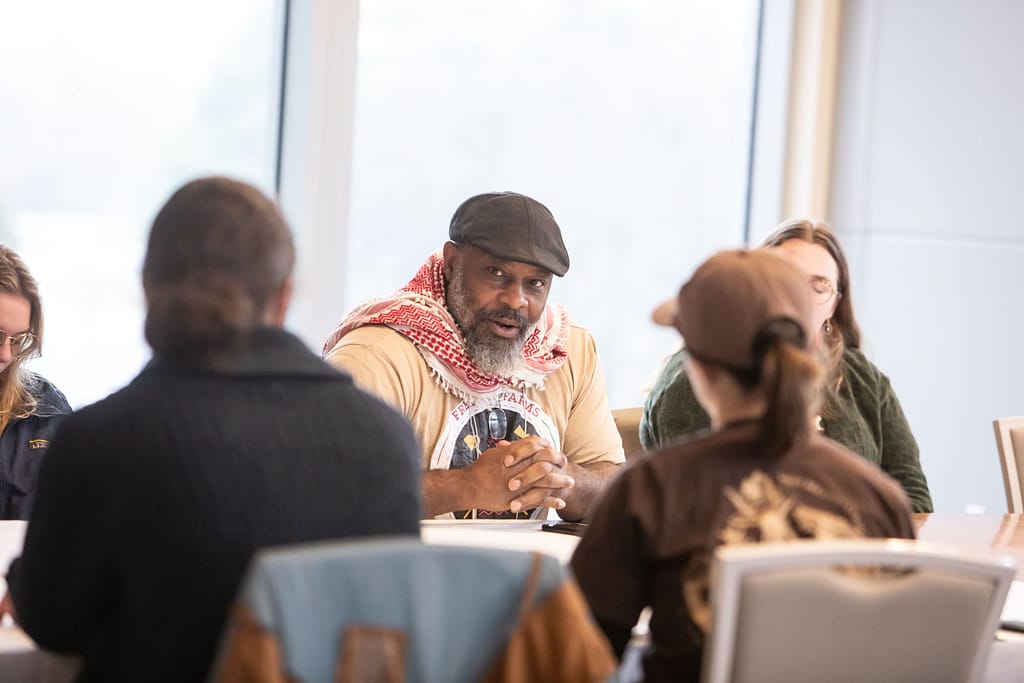Biologist McCabe’s trail camera talk draws a crowd
Saint Michael's professor gives tips on technology and strategies for best wildlife images based on his extensive experience
Inspired by the great success of Saint Michael’s biology Professor Declan McCabe in capturing wonderful wildlife photos with his trail cameras throughout the campus’s Natural Area in recent years, a large crowd on the evening of February 24 learned technical and strategic tips from the professor on selecting, using and optimally deploying these outdoor cameras.
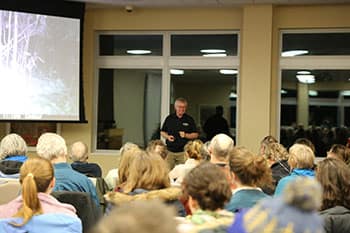
A good-sized audience turned out in the Room to hear Declan McCabe on trail photography. (photos by Ashley DeLeon ’23)
The strong turnout and high level of engagement with the presenter in the College’s Dion Student Center Roy Room on February 24 demonstrated wide local interest in this topic, and reflected well on McCabe’s agreeably warm and entertaining personal style. Representatives of the event’s sponsoring group, Protect Our Wildlife Vermont, invited people of all backgrounds to engage in the program, both in pre-lecture publicity and during the talk.
As attention shifted toward the projector screen to start his presentation, McCabe thanked the crowd for coming out and showing such interest in wildlife photography. He began with an explanation of the importance of GPS tracking systems to ensure that cameras are not lost on a trail. “Don’t lose your cameras!” McCabe said, because “many trees look alike!” He emphasized the importance of monitoring each location to prevent a loss of equipment. McCabe amused the audience by describing how cameras were tracked using paper maps in the days before better technology and the evolution of tracking with services like Google Maps and GAIA GPS.

Declan McCabe shows his audience a trail camera during Monday’s presentation in the Roy Room.
Next he covered camera techniques for people interested in trail photography, examining the relative benefits and drawbacks of open-field and tight-shot photos. In an open field, a photographer can attain more photos, McCabe said; closer shots would pose more difficulty to capture. Close-quartered photos are more beneficial for identification, he said, but will yield fewer photos containing fauna in the frames. By framing photos with meticulous camera placement, one can shape the overall portrayal of the photo, he said. McCabe then provided an “insider tip” on angle adjustment, advising photographers that “… parallel to ground slope is best. [It is] better to point a little too low than a little too high.”
McCabe incorporated many pockets of humor during his lecture, from his integration of amusing animal photos into the presentation, to highlighting the surveillance “benefits” of trail cameras. He told one anecdote about the Saint Michael’s trail cameras seizing footage of deer poachers on the College property a few years ago, and due to the observational qualities of these cameras, the poachers were soon charged for the crime that the cameras detected.

McCabe uses slides to point out aspects of trail photography
Choosing the right trail camera was the final key element of McCabe’s talk. He suggested considering “trigger time, recovery time, image resolution, security box, and price,” and encouraged audience members to read reviews of other photographers to attain an overall view of the camera quality. With the right background and research, attendees can make informed decisions to ensure that their cameras will suit their needs, he said.
Monday night’s lecture provided much insight on the strategies that can be used to capture wildlife photos of high quality; indeed, most of the images displayed during the presentation were captured on the Saint Michael’s campus, driving home the point that while photographers may find it adventurous to travel elsewhere to capture photos, frequently everything that you need is available in your own back yard.
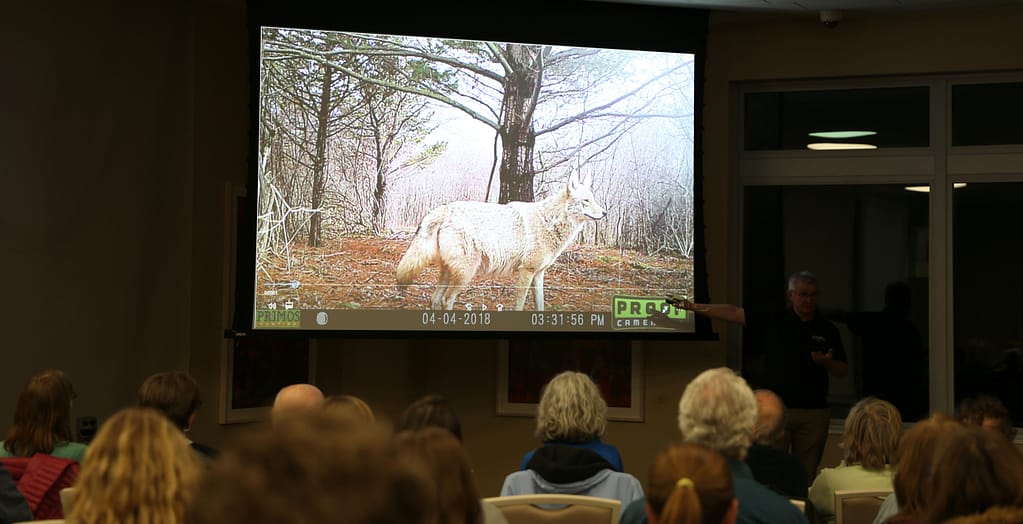
This slide of a Vermont coyote is from iNaturalist and an example of the trail shots shared with the audience.
